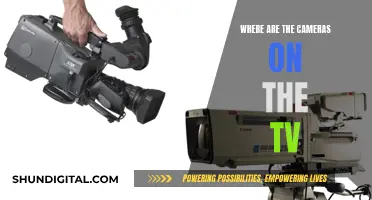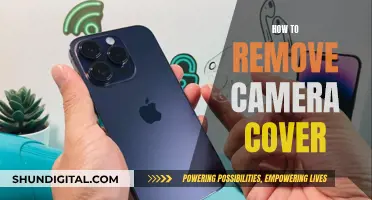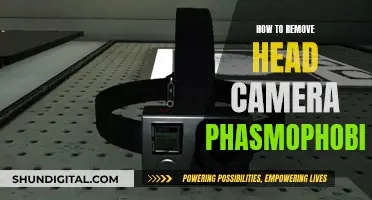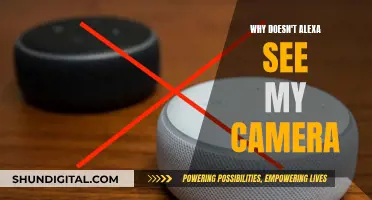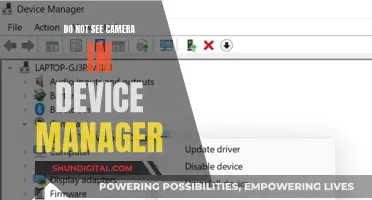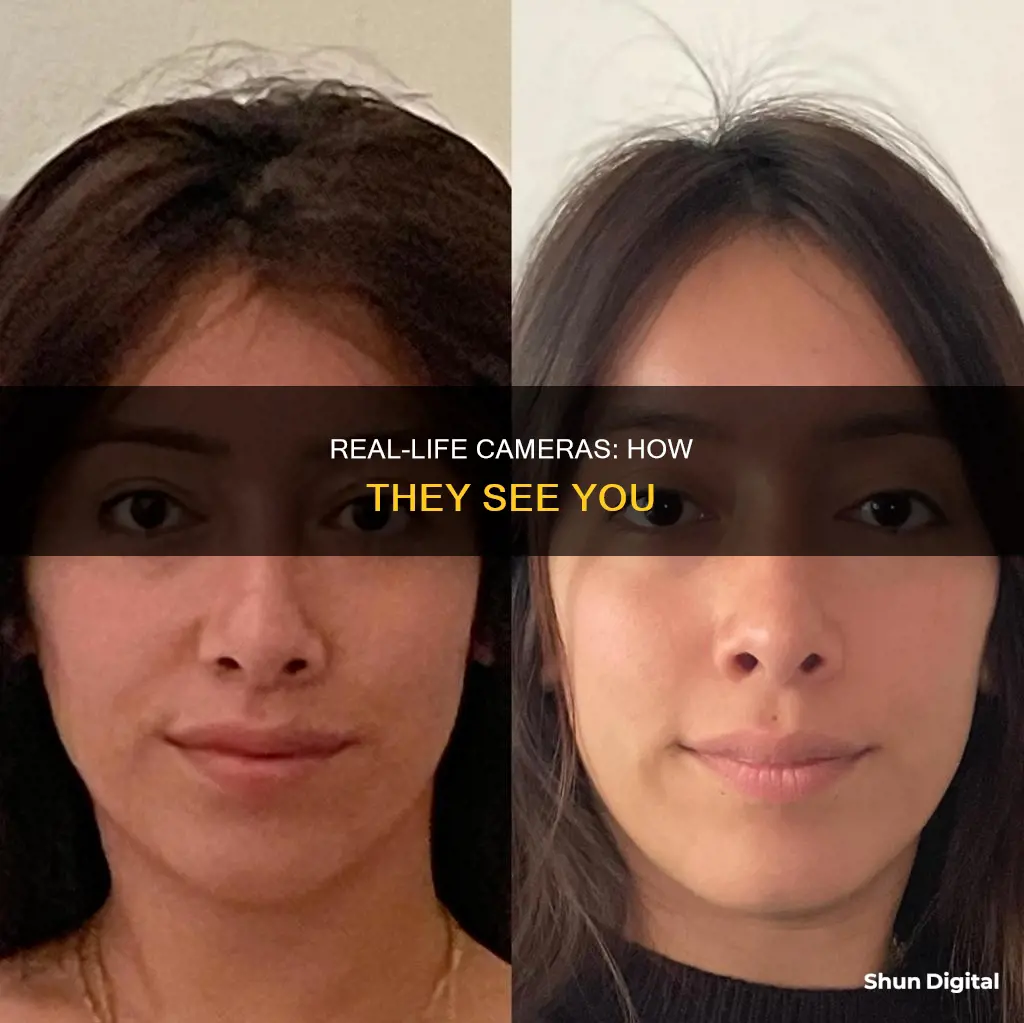
The way people see you in real life is different from how you see yourself in a mirror or a selfie. When you look in a mirror, you are seeing a reversed image of yourself. In real life, people see your image unflipped. This is why you may find that you look different in photographs taken by someone else, as these photos are not mirrored. The way you look in a photograph also depends on the camera's angle, lens size, and quality. Close-up shots, such as selfies, can distort your features due to the short distance between the camera and your face. On the other hand, mirrors provide a 3-D view of yourself in motion, which is generally more accurate than a photograph.
| Characteristics | Values |
|---|---|
| Image | Inverted, not like in the mirror |
| Familiarity | More familiar with the mirror image |
| Preference | Prefer the mirror image |
| Accuracy | Mirrors are generally more accurate than photos |
| Lighting and angles | Affect how you look in different mirrors |
What You'll Learn

People see your image un-flipped in real life
It can be a little unnerving to realise that people see your image un-flipped in real life. When you look in a mirror, you're seeing a reversed image of yourself. So, when you check yourself out in the mirror, that mole on your right cheek? Well, it's actually on your left cheek to the person standing in front of you.
The good news is that you don't need to worry about this too much. While it can be a shock to see your un-flipped image, it's not that you look worse or weird; it's just that you're more used to seeing your flipped image. Your friends and family know and love this version of you, and you're still you whether you're mirrored or inverted!
You might be wondering how to see yourself as others do. One way is to use two mirrors. Place them next to each other so their edges are touching, then angle each mirror diagonally towards you, like you're holding a book. Now, when you close your right eye, your reflection does too, but it looks like your left eye is closed! It's like there's a copy of you standing in front of you.
Another way to see how others view you is to take a photo with a camera. The image straight out of your camera is what you look like to others. It's the same as when you take a picture of something else—you don't need to reverse it to see it how others do.
If you want to take a selfie that shows how others see you, use the rear camera on your phone, not the front-facing camera, as this often flips the image.
Apple Watch Series 4: Camera-Equipped Timepiece?
You may want to see also

The mirror image you see is reversed
The image of yourself that you see in the mirror is not what others see. When you look in a mirror, you are seeing a reversed image of yourself. So, if you have a mole on your right cheek, for instance, it will appear on your left cheek to someone facing you. This is why you may feel that you look different in photographs taken by another person, as these photos show how you appear to others in real life.
The reason you look different in a mirror is because the distance you are seeing yourself from is effectively twice the distance you are from the mirror. For example, if you are two feet from the mirror, the image you see is from four feet away. This is why you may feel that your features appear more pronounced in photos taken by another person, as the curves and lines of your face don't match your expectations.
However, it is important to note that mirrors are generally more accurate than photos. This is because mirrors are less susceptible to distortion and provide a 3D view of yourself in motion. Camera angles, lens sizes, and quality can all affect how your image appears in a photo.
If you want to see yourself as others do, you can place two mirrors together at a right angle. Angle them diagonally towards you so that their edges touch and form a right angle. Now, when you close your right eye, your reflection will do the same, but it will look like your left eye is closed!
While it can be jarring to see your face flipped, it is important to remember that this is the face your friends and family know and love.
Smart TVs: Are They Watching You?
You may want to see also

Cameras can distort your image due to their angle, lens size, and quality
It's important to remember that cameras can distort your image, and the resulting photo may not accurately represent how people see you in real life. This distortion can be caused by a combination of the camera angle, lens size, and quality.
Let's start with lens distortion, which is when a lens produces curved lines where straight lines should be. There are three main types of lens distortion: barrel distortion, pincushion distortion, and waveform (or mustache) distortion. Barrel distortion occurs when straight lines bend outward from the center of the image, often seen in wide-angle lenses. Pincushion distortion is the opposite, with lines bending or "pinching" inward from the center. This typically happens with telephoto lenses. Finally, waveform distortion combines elements of the first two, resulting from a large-angle camera in zoom mode.
The angle of the camera can also affect distortion. For example, standing too close to your subject with a wide-angle lens can make certain body parts closest to the camera appear abnormally large. This is why portrait photographers often use a 50mm lens or longer to avoid this type of distortion.
Additionally, the quality of the camera and lens plays a role in the final image. Higher-end cameras and lenses may produce sharper images with less distortion, but even the most expensive equipment can exhibit some level of distortion.
While some distortion may be undesirable, it can also be used creatively in photography. For instance, pincushion distortion can make people appear thinner, and barrel distortion can add a unique perspective to an image. Ultimately, understanding the impact of camera angle, lens size, and equipment quality on image distortion will help you capture the photos you desire.
Displaying a Wireless Camera Feed on Your TV
You may want to see also

Mirrors are generally more accurate than photos
No Distortion
Firstly, mirrors are less affected by distorting factors. A mirror simply reflects your image back to you, whereas a camera's angle, lens size and quality can all impact the final image. The quality of a photo is dependent on the camera used, the lighting in the environment, and many other factors. These factors can compromise the quality of a photo.
3D View
Secondly, mirrors offer a 3D view of yourself in motion. People see you as you move, so this tends to be a more accurate depiction of you. In addition, people tend to find you more attractive when you're in motion rather than frozen!
Familiarity
Finally, the image you see in the mirror is what you are used to seeing. You see this image of yourself multiple times a day. This is the image you are familiar with and have grown to like.
However, it is important to note that the non-mirrored version of yourself is what everyone else sees when they look at you. Most people who see you face-to-face are used to your "photo" version.
Sanyo TV Camera: Fact or Fiction?
You may want to see also

Photos taken from a distance with a telephoto lens are more accurate
If you want to know what you look like to other people in real life, it's best to be photographed from a distance with a telephoto lens. This type of lens has a long focal length, typically more than 200mm, which allows it to zoom in significantly.
Telephoto lenses are often used for wildlife photography as they can capture tiny subjects, such as birds, from a distance without disturbing them. They are also useful for landscape photography as they can make the depth of field appear more shallow and can normalise the size and distance difference between near and far objects.
When used for portrait photography, telephoto lenses can put your features back into their actual configuration by narrowing the plane of your face. This is why TV shows are often filmed from several feet away from the actors. Close-up shots, like selfies taken on cellphones, are never accurate because the lenses distort the image by smashing all the planes together.
When taking a photo with a telephoto lens, it's important to use a tripod to minimise camera shake and ensure a clear image. This is because the long focal length magnifies every little movement of the camera, and even small amounts of shake will result in a blurry image.
While mirrors are generally more accurate than photos, they still reverse your image. A telephoto lens can show you what you truly look like to others.
Apple Watch SE: Camera Remote Control?
You may want to see also
Frequently asked questions
People see you inverted, or the opposite of your mirror image. This means that any features you're used to seeing on the left side of your face, such as a mole, are actually on the right side.
Close-up photos, like selfies, can distort your features due to the camera angle and lens. Photos taken from a distance with a telephoto lens will provide a more accurate representation of how others see you.
You tend to like your mirror image better because it's what you're used to seeing daily. This is known as the "mere exposure effect," where we tend to favour things we see frequently.
Mirrors are generally more accurate than photos as they provide a 3-D view of yourself in motion, and are less susceptible to distortion.
You can use two mirrors placed together at a right angle to see your "true" image. This will show you how others see you without the reversal of a mirror.


